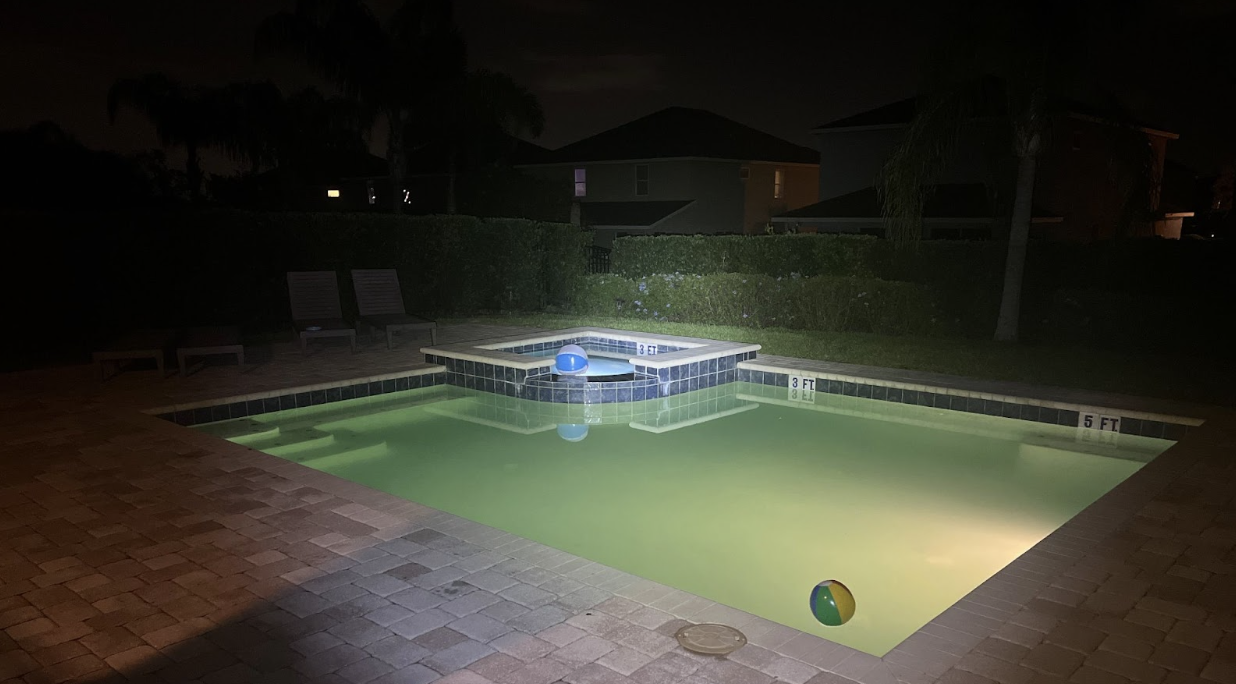Thursday, President Biden is expected to announce an infusion of funding aimed at eliminating the country's dangerous lead pipes that carry drinking water into people's homes and businesses.
The Environmental Protection Agency will be handing out a total of $3 billion to every state and territory in the U.S. through the president's Bipartisan Infrastructure Law.
"The Biden-Harris administration has committed to removing 100% of lead service lines as quickly as possible so that everyone in this country can turn on their tap for a glass of water and know that it's safe to drink," EPA Administrator Michael Regan told reporters ahead of the announcement.
But in Flint, Michigan — whose residents are credited with bringing attention to the dangers of lead service lines to the country — removing them all has been anything but quick, a recent Scripps News Investigation found. Our exclusive report revealed that hundreds of lead service lines there still haven't been replaced, and more than 1,000 addresses remain unchecked.

Scripps News Investigates
Scripps News Investigation: A decade, a contempt order, and $100M later, 'Flint is not fixed'
"We're still here," Flint resident Melissa Mays told Scripps News last month. "We've done a lot for the rest of the country with getting people's pipes out, getting laws changed ... but we're still not fixed," she said.
Last week marked a decade since the City of Flint was thrown into a water crisis that exposed its 100,000 residents to lead contamination and left a dozen people dead. It was later found that officials from Flint, the state of Michigan and the EPA knew about safety concerns in the water, but had only taken action after tests showed children were poisoned, with alarmingly high levels of lead in their blood.
Damage from lead is irreversible and poses an especially significant threat to children's developing brains. The Centers for Disease Control and others say no amount of lead is safe to consume.
"This is the United States of America, for God's sake," President Biden said in January 2022. "Everyone in this country should be able to turn on the faucet and drink clean water," he said.

Biden, who was vice president when the crisis in Flint started in 2014, committed to replacing the estimated 10 million lead services lines across the country when he signed his Bipartisan Infrastructure law at the end of 2021.
A few months after he signed it, he had this to say in his remarks about the historic piece of legislation:
"I want you to know: I see you, I hear you. We understand. And I've seen and we've — understand the damage done in places like Flint, Michigan ..."
Since Flint's water crisis was first exposed, a few cities have managed to start and finish their service line replacement projects. Meanwhile, Flint residents are still waiting.
Scripps News was the first to report that the project to remove dangerous pipes in Flint had been on hold since December while the city looked for more money to finish the job. That's because nearly all of the over $100 million in federal and state funds set aside for the project had been spent.

On Wednesday, a Flint city spokesperson told Scripps News work had just resumed on the project — a week after our reporters pressed the city on the stoppage. A city spokesperson said they had secured $1.5 million from the state and were committed to replacing the hundreds of known lead pipes we discovered were still in the ground. They also confirmed they would be following up on the more than 1,000 addresses we found that have never been checked in the 10 years since this crisis started.
The city admitted $1.5 million won't be enough, but it's unclear how much more it will take to get the job done.
On the call with reporters to discuss the administration's upcoming funding announcement, Scripps News asked if federal officials were aware that Flint — a decade after its crisis began — was still struggling to get all of its lead pipes out of the ground and didn't know how it would fund the rest of the work.
An official said she did not have specific details about city numbers in front of her, but said "we are certainly here to provide resources to cities and to states in looking for other funding opportunities."
With today's announcement, the State of Michigan is set to receive nearly $62 million in new funding to replace lead pipes. It’s unclear yet if any of that would go to Flint.
"Frankly there should be no [lead] service lines left in Flint,” said Erik Olson, the Natural Resources Defense Council’s (NRDC) Senior Strategic Director for Health and Food.
After the crisis was exposed, NRDC helped residents in Flint win a federal lawsuit in 2017 against the city and State of Michigan, requiring the governments replace all lead and galvanized steel service lines to homes at no charge to residents. NRDC attorneys have taken the city to court multiple times in the years since, after Flint missed deadline after deadline to finish the work. The city is now being held in contempt.
Olson said he’s disappointed residents in Flint are still waiting.
"We believe Flint truly has changed the world,” he said. Before the water crisis there, he said “most people would say, what are you talking about? What are lead pipes?”
Olson, who has been pushing the EPA to strengthen its rules to reduce lead in drinking water since the late 1980s, said Biden’s funding announcement today is a reminder of just how far the country has come since Flint residents stood up and demanded clean water from their government.
“This is truly a historic amount of funding, more than ever has been put into removing lead pipes in history," he said.
The Biden administration has committed a total of $15 billion for the national project, but Olson said estimates put the actual cost to get the lead and galvanized steel pipes out somewhere between $45 and $60 billion. Who foots the rest of the bill – states, water systems, residents - still isn’t worked out.
"What's important to keep in mind is that, yes, this is going to cost money, but right now we're paying for not having those pipes replaced with people's health,” Olson said.
A 2023 Harvard study found that for every $1 spent to reduce lead in drinking water, $35 is returned in savings from avoiding further infrastructure damage and continuing harm to human health, which includes “preterm birth, declining cognitive function in children, and hypertension and coronary heart disease in adults.”
A City of Flint spokesperson told Scripps News last month 10,522 service lines had been identified and replaced so far. In Flint, that works out to about $10,000 per line.
For Melissa Mays, whose own kids were exposed to Flint’s contaminated water when the crisis started, this community’s children are worth it.
“They're amazing that they've survived through this,” she said. But she wonders where they would be today had lead contamination never been part of their lives.
“All of it was preventable,” Mays said.
Scripps News Data Reporter Amy Fan contributed to this report.
Through a series of reports since last May, Scripps News Investigates has found a decade in, the water crisis in Flint still isn’t over.
We'll be following this story. Email Investigative Producer Carrie.Cochran@Scripps.com with questions or tips.










